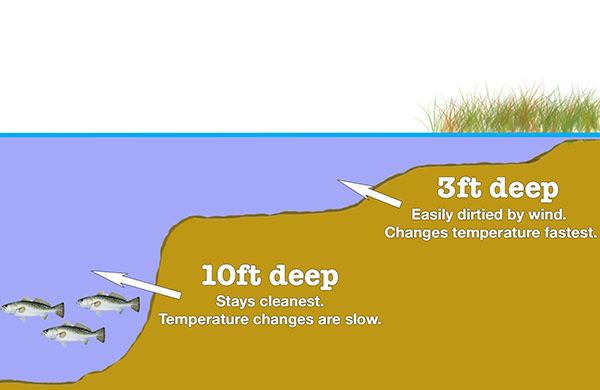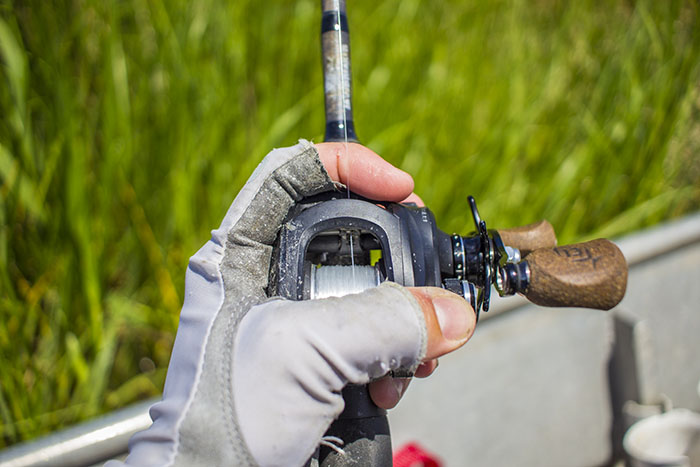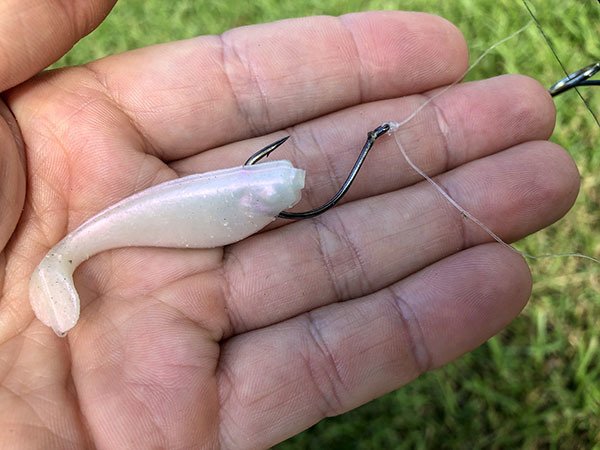We can’t always choose the days we go fishing. When the water temperature drops hard, this is how you can adapt to bring back a box of fish.
Drops in Water Temperature
Most inshore anglers agree the toughest condition to fish is rapidly changing water temperature, during and even after the change.
Hurricane Harvey (September 2017) served as a reminder for this phenomena when he sat over the Gulf Coast, blocking sunlight and dropping cool rainwater for days on end.
The result? Water temperature had dropped ten degrees and the marsh became a virtual ghost town.
It’s an easy memory! I fished four days straight once the sun came out, and the fish didn’t start turning on heavily until day four.
Why is this so bad for fish?
Fish don’t have the luxury of being warm-blooded, like me and you.
In fact, they are hardly able to regulate their body temperature.
So how do they survive?
Fish use different enzymes to regulate their bodies for different temperatures.
So, if the water gets colder or warmer, they readjust which enzymes they use.
The more drastic the temperature change, the more time they need to adjust.
This explains why the marsh became a ghost town when the water temperature plummeted.
Everything was taking a “time out” to chemically tune their bodies.
This is why fish like “deep holes”
Remember that fish just want to be comfortable, it’s part of their behavior.
They seek deep water as a refuge from rapidly dropped water levels and temperature.
They won’t have to deal with that stress, and it’s a safe and stable place for them to readjust, if they need to at all.

Fish deep holes after a hard temperature drop
The deepest water is the lowest level in the marsh, where all the water drains after a stiff northwest wind (usually associated with a drop in air and water temperatures).
This is not a specific depth, but relative to the surrounding water.
Examples of “deep holes”:
- Water 6 ft deep surrounded by 3 ft deep water
- Water 24 ft deep with 12 ft of depth on either side
It can be confusing, so this article here will give you a great insight as how to find these spots speckled trout love to hide in.
When should you start?
You should fish all day, especially if it’s your only day in the week to do so.
But I would definitely start in deeper water and work my way up to the shallow water.
Also keep in mind that fish may not start biting until the afternoon, once the sun has warmed the water a little, but this usually applies to colder water temps in the 40s and low 50s.
What tackle should you use?
You’d want to throw jigging gear all day long.

Sure, cast a cork now-and-then just to see if anything takes it, but experience has shown that effectively fishing the bottom with a jighead is most effective.
Other anglers (to include yourself) may be more comfortable with a Rucker Rig, Carolina Rig or Drop Shot.

Conclusion
Understanding fish behavior is part of knowing where to fish.
Deeper water is a refuge for fish, and they’d be happy to have bait served to them inside there.
Tight lines, y’all.
Questions? Something to add?
Comment below!

Hey Juan, thanks for reading!
I’m not sure what you want me to elaborate on?
Devin your comment about relative depth was very informative. I knew about fishing deep water and temp difference of water. But having relative shallower water near by was a very interesting comment. Literally the fish like a hole not just deeper water. Please elaborate. Thanks.
Thank you! I appreciate you reading and hope it gets you on some fish this fall!
Great Summary & Reminder of what you cover in the other classes & blogs!
Thanks again Capt!
Appreciate ya